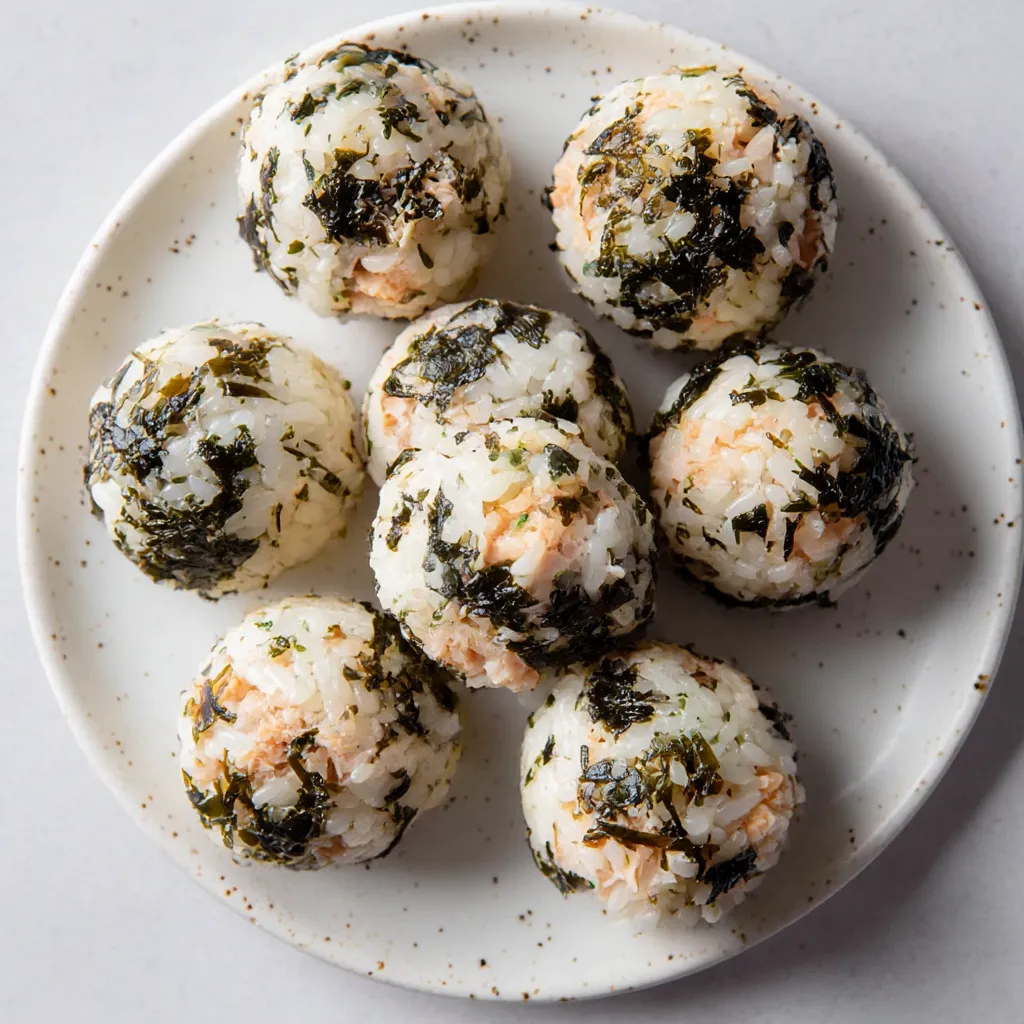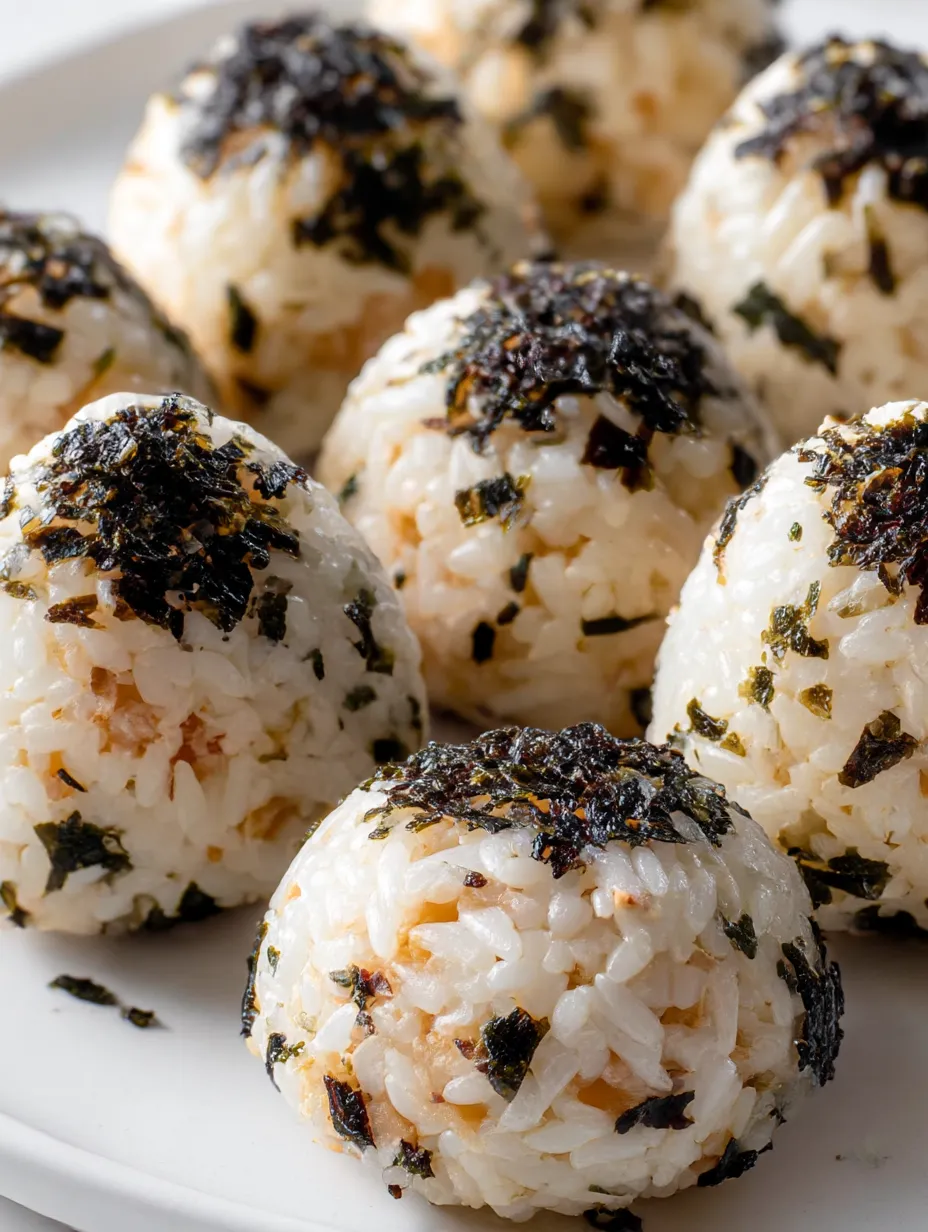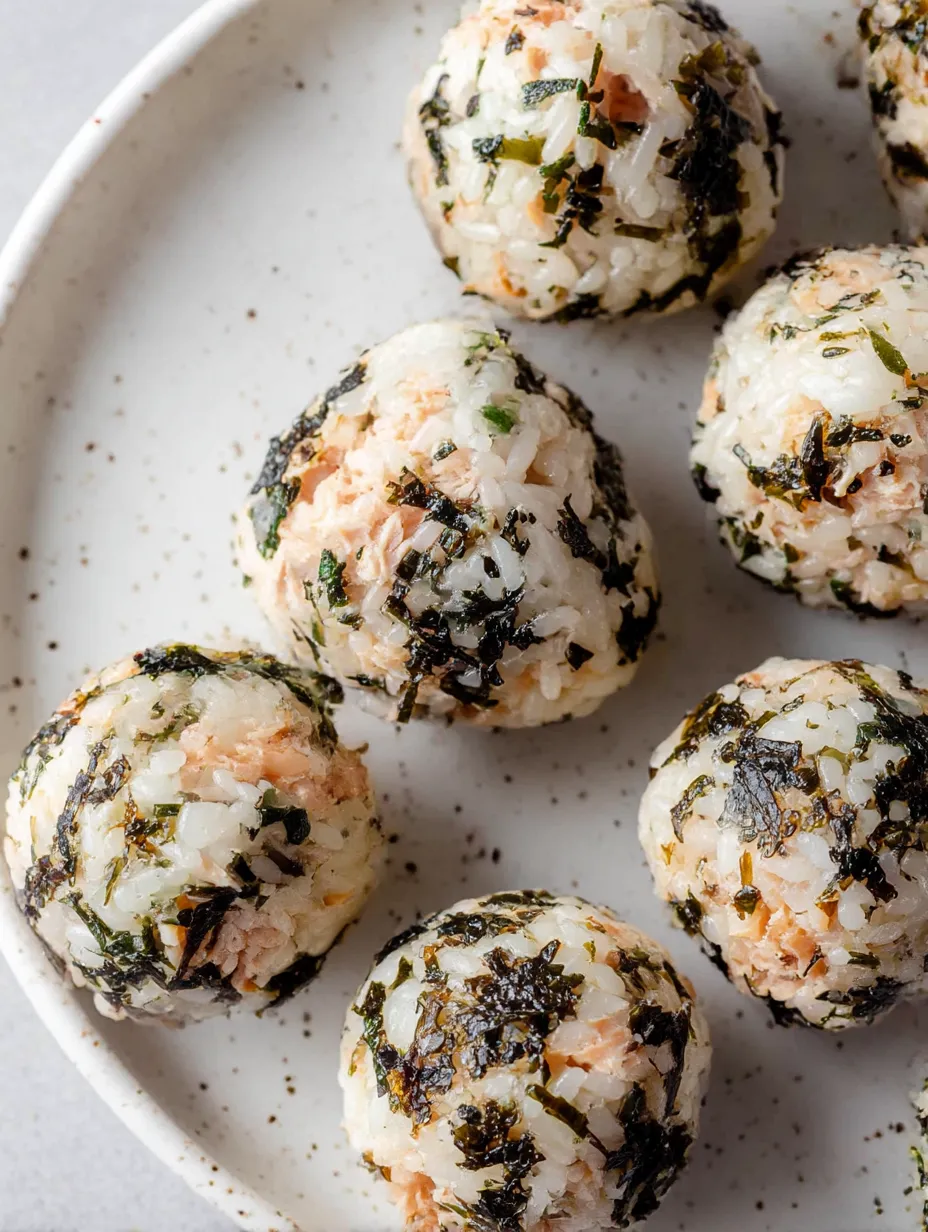 Pin it
Pin it
This simple tuna mayo rice ball recipe has become my go-to option whenever I need a quick snack or light meal with minimal effort. These Korean-inspired rice balls deliver satisfying flavor in just minutes, combining the comfort of warm rice with savory tuna and the distinctive taste of roasted seaweed.
I first made these rice balls when searching for creative ways to use leftover sushi rice. Now they've become a weekly staple in our household, with everyone customizing their own variations based on what we have available.
Ingredients
- Cooked sushi rice: The sticky texture is essential for holding the balls together
- Canned tuna: Provides protein and savory flavor; use water- or oil-packed based on preference
- Sesame oil: Adds a rich nutty aroma that elevates the entire dish
- Japanese mayo: Specifically Kewpie; binds everything while adding creamy tanginess
- Shredded roasted seaweed: Brings umami flavor and adds nutritional benefits
Step-by-Step Instructions
- Combine Ingredients:
- Add the cooked sushi rice, drained canned tuna, sesame oil, Japanese mayo, and shredded roasted seaweed to a large mixing bowl. Make sure the rice is still slightly warm or at room temperature for easier mixing. Cold rice from the refrigerator will be more difficult to work with.
- Mix Thoroughly:
- Use a large spoon or rice paddle to gently fold all ingredients together until evenly distributed. The mixture should be slightly sticky but not overly wet. If it seems too dry, add a bit more mayo one teaspoon at a time. The sesame oil should be coating every grain of rice for maximum flavor.
- Portion The Mixture:
- Press the rice mixture down evenly in the bowl and use a spatula to divide it into 8 equal portions, similar to cutting a pizza. This ensures uniform sizing. Alternatively, you can scoop approximately 1/3 cup of mixture for each ball if you prefer to eyeball it.
- Shape The Balls:
- With clean hands or while wearing food-safe gloves, take one portion of the rice mixture and gently press it together, forming a compact ball. Use your palms to roll it until smooth and round. The warmth and pressure from your hands activate the starchiness in the rice, helping everything stick together.
 Pin it
Pin it
Sesame oil is my secret weapon in this recipe. Just a tablespoon transforms ordinary ingredients into something truly special, adding a distinctive nutty aroma that makes these rice balls irresistible. My daughter now recognizes the smell immediately and comes running to the kitchen whenever I open the bottle.
Storage Tips
These rice balls can be stored in the refrigerator for up to 2 days when wrapped individually in plastic wrap. The key is to let them come to room temperature before eating for the best texture. I recommend against freezing as the rice texture suffers significantly when thawed.
 Pin it
Pin it
Versatile Variations
While the basic recipe is delicious as is, you can customize these rice balls countless ways. Try adding diced avocado, corn kernels, or finely chopped kimchi for extra flavor and texture. For a spicier version, mix in a teaspoon of gochujang or sriracha with the mayo. You can also experiment with different shapes beyond the traditional ball form; triangular onigiri style works beautifully with this mixture.
Serving Suggestions
These rice balls are traditionally enjoyed at room temperature, making them ideal for picnics, lunchboxes, or quick snacks. For a more substantial meal, serve two or three balls alongside a simple miso soup or cucumber salad. You can also create a fun presentation by placing them on a bed of additional shredded seaweed and garnishing with sesame seeds.
Frequently Asked Questions
- → What type of rice is best for this dish?
Sushi rice is ideal because of its sticky texture, which helps the rice balls hold their shape.
- → Can I use regular mayonnaise instead of Japanese mayo?
Yes, you can substitute regular mayonnaise, but Japanese mayo like Kewpie adds a creamier and slightly tangy flavor.
- → How do I store leftover rice balls?
Wrap them individually in plastic wrap and store them in the refrigerator for up to a day. Serve chilled or reheat lightly.
- → Can I add other ingredients to the mixture?
Absolutely! You can add ingredients like chopped scallions, sesame seeds, or a touch of soy sauce for more flavor.
- → Is it necessary to use roasted seaweed in this recipe?
The roasted seaweed adds a subtle umami flavor and texture, but you can omit it or replace it with other seasonings if preferred.
